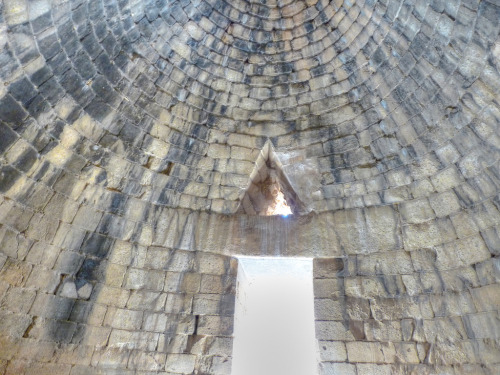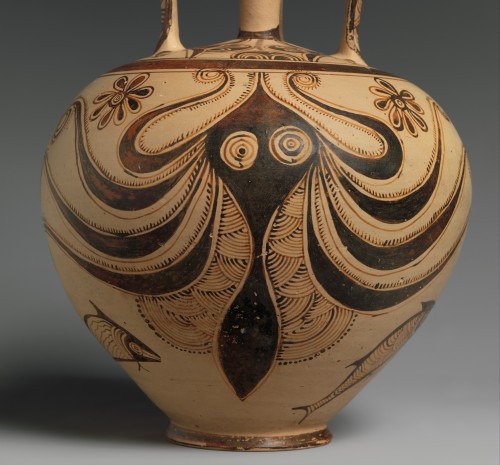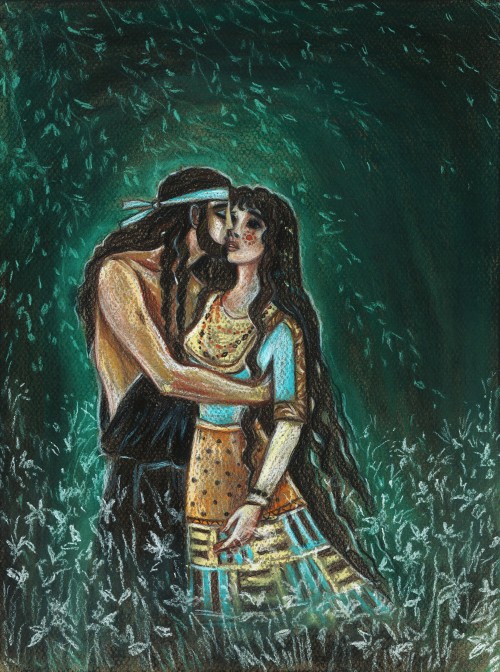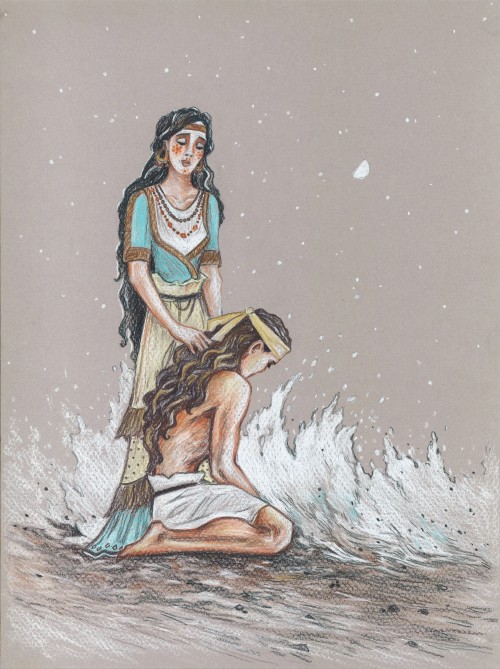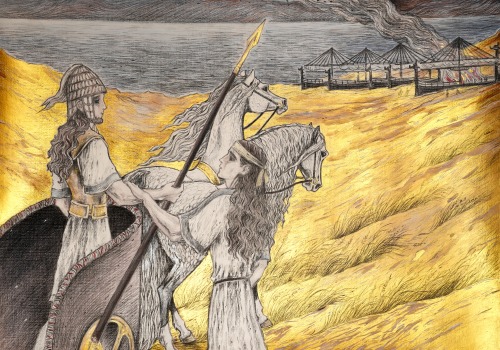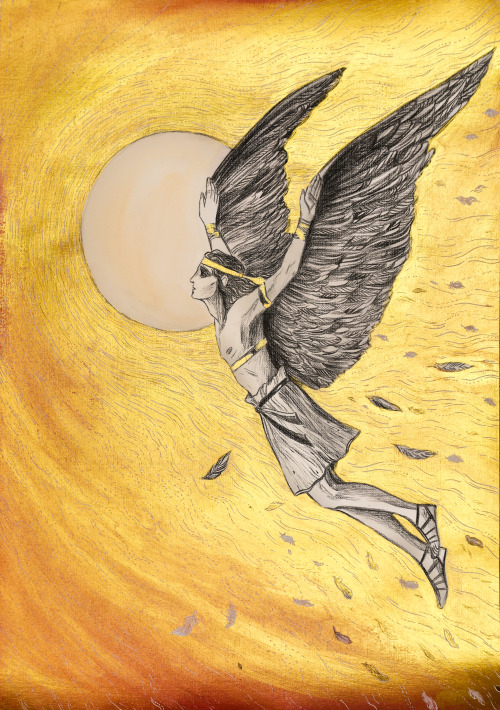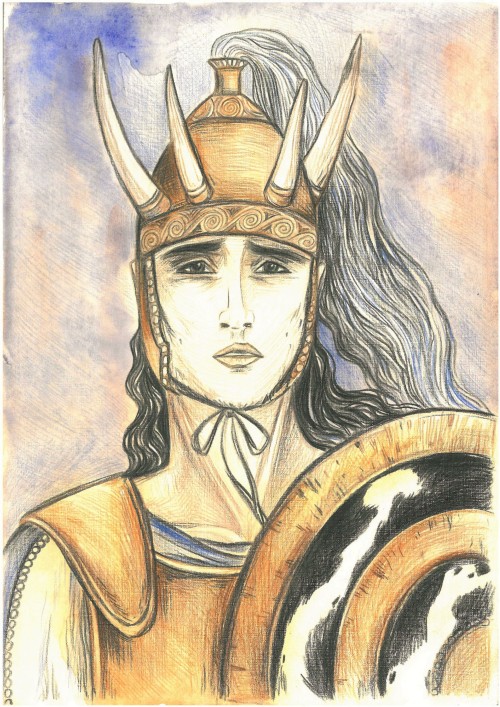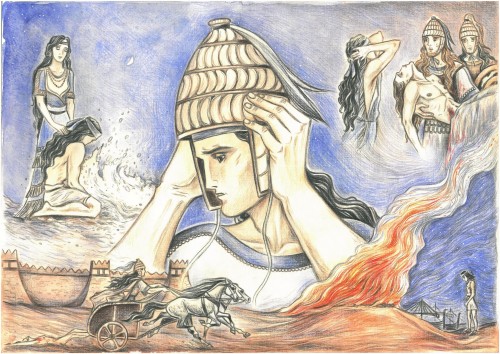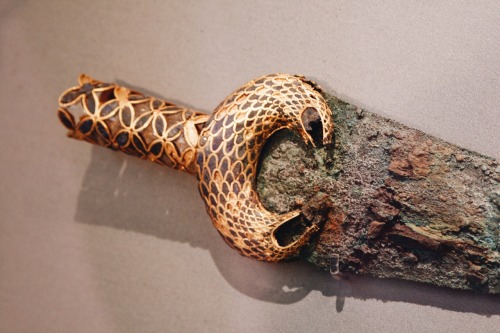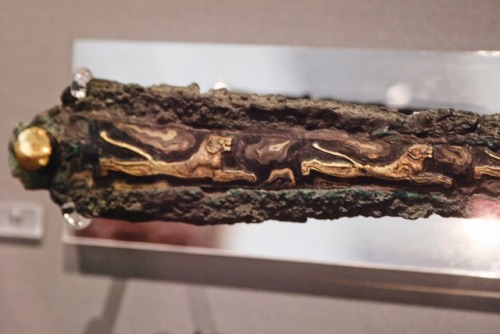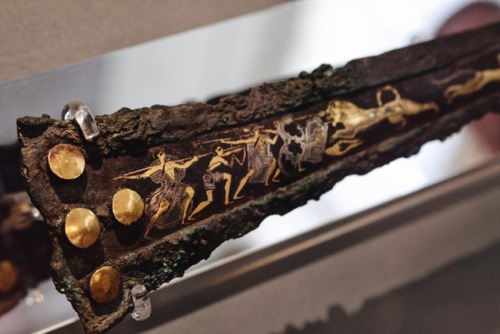#mycenaean
Terracotta jar with octopus.
Mycenaean vase, 1200-1100 BC.
Metropolitan Museum of Art, New York.
Post link
The Mycenaean tholos tomb (fancifully) named the ‘Treasury of Atreus’, located in Mycenae, Greece.
This tomb dates to ca. 1300-1250 BC. Elite Mycenaean families who lived around this era, perhaps not too long before the presumed date of the Trojan War, buried their dead in beehive-like tombs which were covered by huge earthen mounds. There are about 9 such known examples in Mycenae, but there are much more elsewhere. This example is the most famous and best preserved of these tombs, with a 43-foot high dome. It was unfortunately robbed -we have no information regarding its burials or accompanying grave goods. Except for the elite status of the Mycenaean, we are thus left essentially clueless as to whom this tomb was owned by.
Photos taken by Klearchos Kapoutsis& Michael Clarke.
Post link







A Mycenaean vase or krater depicting a stylized octopus (c. 1400-1300 BC). Provenance: Ialysos, Rhodes. Now on display at the British Museum.
Our t-shirt design inspired by this vase is available on Amazon (only US): https://www.amazon.com/dp/B09SF513K3
Terracotta stirrup jar with octopus. Date/Period: ca. 1200–1100 BC. Culture: Helladic, Mycenaean. Heavily influenced by the preceding Minoan culture of Crete, the city of Mycenae became the dominant power on the Greek peninsula from 1400 - 1100 BC.
Our t-shirt/tank-top/v-neck designs are inspired by this vase available on Amazon & Redbubble (onelink): https://geni.us/myceneanoctopus2
Post link
Mycenaean Gold Inlaid Weaponry These incredible pieces showcase the influence of Minoan motifs on Mycenaean art of war. Housed at the Athens Archaeological Museum
Post link


Heronoja is a fictional country I made located on an eastwards peninsula. Since my world has so many countries, I might begin with that nation of blonde alien hybrids.
If Heronoja were a countryball, they would be either male or female, depending on the work. They also come with blonde hair, like the country’s people. Like other countryballs, Heronoja’s interests reflect those of its people.
The male version would love gold, spears, brushing his hair, chariot riding and jousting, and unicorns. The female version also loves her hair and spears, but also likes archery, dresses, and dancing. But regardless, Heronojaball hates ice cream and vampires.
Heronojaball is quite suspicious about outsiders, due to being invaded and tortured by other countries, so they only trust a few friends. They also don’t like it when others refer them as “doll” because they looked unnervingly beautiful. They also love to ride on their unicorn.

This is the traditional dress worn by Heronoi women and girls. Their attire may look Mycenaean, but the Heronoi themselves are aliens. And they are very obsessed with art and beauty, to a very annoying extent.
From left to right: Wiresa, Komata, Teraxari, and Komawe. Wiresa is an archer with blue hair, Komata is a sweet princess-like fangirl who loves unicorns, Teraxari is perhaps the most mature of the four, and Komawe is Komata’s older sister.
Warrior Vase, Mycenae, Greece. 1200 BCE, Mycenaean.
- referred to as a krater; two handles on the side, was used to store and/or serve wine. more for ceremonial/decorative use.
- depicts a woman (left hand side). raised arm, bidding farewell to the soldiers. only one to show emotion.
- battle very significant with ancient greece.
- soldiers show no emotion, but they’re soldiers. supposed to be stoic marching into battle. features do not differ; same figure repeated. certain anonymity to being a soldier. promotes sense of unity amongst the military, one unitary body
Post link
Lion Gate, Mycenae, Greece. 1300 BCE. Mycenaean.
- limestone relief panel; 9’ 6" high.
- lots of fortresses in Mycenaean architecture; due to it’s location in the gulf, under threat of attack. very vulnerable; reachable through sea and land
- gate protected by two lionesses. more fierce than their male counterparts because they protect their young and do all the hunting
- post and lintel technique. two posts to support the bar above to create the archway
- largest sculpture from Mycenae.
Post link
Stirrup jar with octopus, ca. 1200–1100 b.c.; Late Helladic IIIC
Mycenaean
TerracottaA large, wide-eyed octopus stretches its tentacles across the curved body of this vessel. Flecks of paint and thin, arching lines denote the creature’s membranes, and large concentric rings represent its eyes. The spiraling ends of its tentacles lure the viewer around the sides to another, similar octopus that decorates the back of the jar. This type of vessel takes its name from the stirrup-shaped handles at the top. In antiquity, such jars—easy to carry and stow, and designed not to spill—were commonly used to transport wine and oil throughout the Mediterranean. Although this vessel is a product of the Mycenaean culture of mainland Greece, its marine imagery derives from the art of Minoan Crete. When the Mycenaeans conquered Crete (ca. 1450 B.C.), Minoan styles exerted considerable influence on the art of the mainland. The design on this vase ultimately derived from motifs that decorated marine-style vessels of the Late Minoan I period.
Control of the sea was essential to the Mycenaeans for gaining and maintaining power over their vast domain. The shape of this stirrup jar and its octopus decoration testify to the importance of the sea as an avenue of communication and source of food and wealth.
Post link



